Applying NLP for Intelligent Document Analysis using papAI 7 AI...
Read MoreHow to Choose the Right AI Platform in 2024?
Table of Contents
ToggleAll businesses need to keep up to date with new technological solutions to remain at the cutting edge of competitiveness. Data was at the forefront of discussions last year, but now we’ve moved into the age of AI.
The landscape of AI adoption in companies is rapidly evolving, AI is expected to improve overall productivity by 40% by 2035 (PWC). Already, 44% of business leaders report increased productivity due to AI implementation.
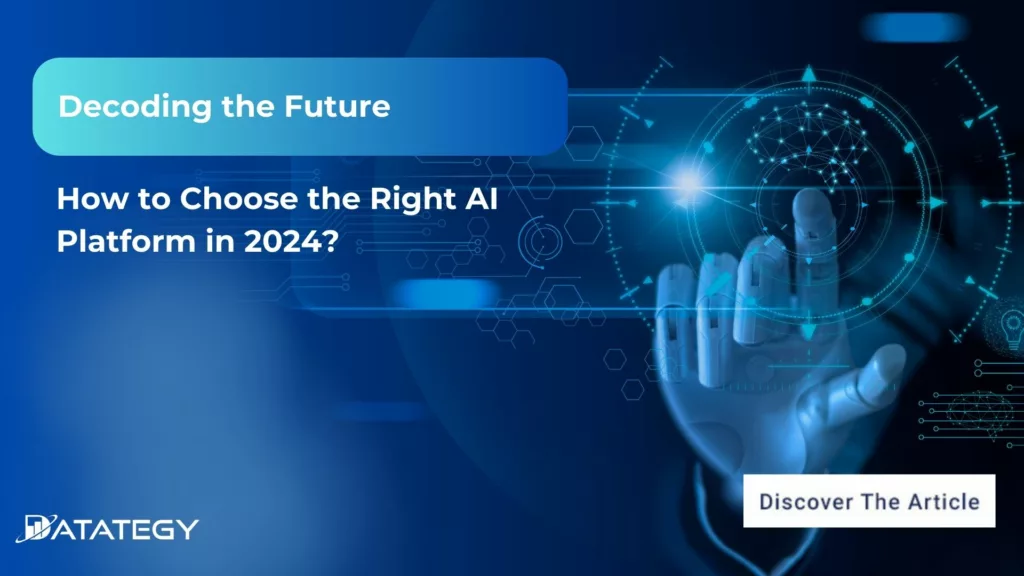
In this comprehensive article, we will delve into diverse AI use cases across industries and provide insights on selecting the most suitable AI platform in the dynamic landscape of 2024.
Overview of the Artificial Intelligence Landscape
Business Outpaces Academic Research
Most significant machine learning models came from academics until 2014. But there was a significant change, with business overtaking academia. As of 2022, academia had contributed just three notable machine learning models, while industry had created 32. These days, building state-of-the-art AI systems requires a lot of resources, including data, computing power, and money—assets that businesses have more of than NGOs or academic institutions.
The Emergence of End-to-End Solution
Every phase of the AI development and deployment process is covered by end-to-end solutions, from data preparation to model training and monitoring. By using a comprehensive strategy, the problems posed by different platforms and technologies being employed separately at different phases of the AI lifecycle are addressed. The objective is to streamline processes, boost productivity, and eventually shorten the time to value for AI initiatives.
For instance, Grand View Research projects that the MLOps industry would reach $6.5 billion by 2025. This demonstrates the growing need for tools that manage the full AI lifecycle, which end-to-end platforms frequently satisfy.
Cloud AI Services
According to Gartner, the market for cloud AI services is expected to reach $33.9 billion by 2025, indicating that the industry is primed for tremendous expansion. This prediction emphasizes how crucial cloud infrastructure is to expediting and progressing AI installations in a variety of industries.
For enterprises looking to create, implement, and oversee artificial intelligence applications, cloud AI services provide an environment that is both flexible and scalable. The significant expansion in the market is ascribed to the intrinsic benefits provided by cloud platforms, such as their affordability, adaptability, and capacity to use vast amounts of processing power.
The Needs of AI Professionals
The growing demand for skilled AI professionals is outpacing the supply, potentially creating a talent gap of 97 million people by 2025 . From a technical standpoint, AI specialists need to be well-versed in statistical modeling, data preparation, and machine learning methods. The basis for building and optimizing AI models is proficiency in programming languages such as R and Python. An additional requirement for scalable and effective deployment is knowledge of cloud platforms, such as AWS or Azure.
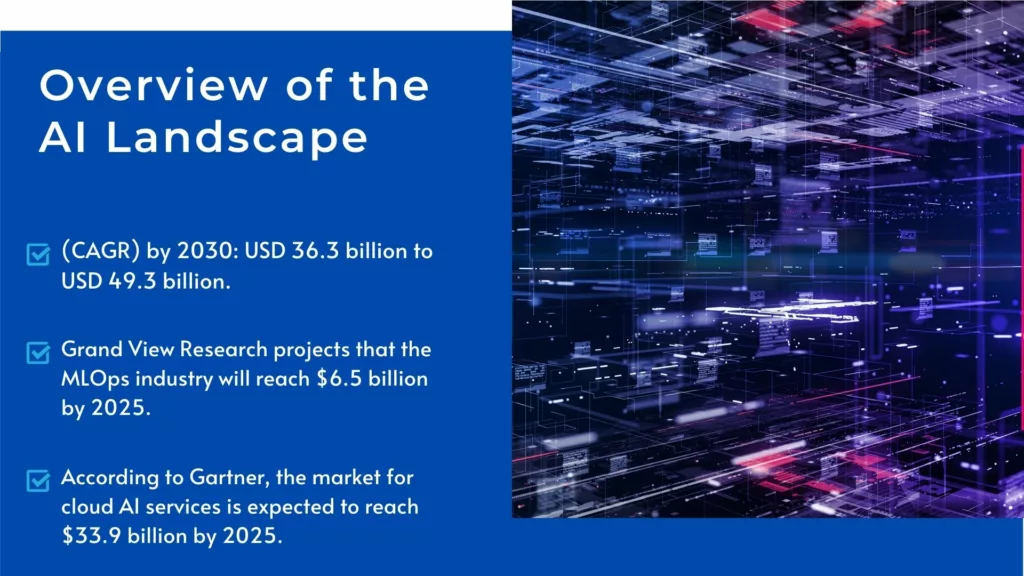
What are the Main Benefits of Using AI Platforms?
Enhanced Efficiency
Businesses in a variety of industries are changing the game thanks to AI platforms’ increased productivity. These systems are excellent at automating routine and repetitive procedures, which helps businesses increase productivity and streamline operations. Artificial intelligence systems allow human resources to shift their attention to more strategic and complicated tasks that call for creativity, critical thinking, and decision-making by taking over mundane procedures.
The increases in efficiency include whole processes as well as individual activities. AI systems can optimize processes, which can improve an organization’s overall operational efficiency. This is especially important in fast-paced work settings where flexibility and responsiveness are critical success elements.
According to the PwC report, companies that use AI will see their overall productivity increase by 40% by 2035.
Improve Decision-Making
One of the most important advantages of using AI platforms in the modern corporate environment is better decision-making. These systems enable organizations to make informed decisions based on precise and up-to-date data. AI algorithms may find patterns, trends, and correlations that may escape the notice of conventional analytical techniques by analyzing enormous information quickly.
AI platforms’ rapid data analysis guarantees that decision-makers have access to the most recent information, improving an organization’s agility and reactivity. This capacity to make decisions quickly is especially important in fast-paced businesses where being able to react quickly to changes in the market or new possibilities may provide you a competitive edge.
40% of executives believe AI has improved their decision-making, especially in data-driven insights and risk management. (PWC AI Advantage Report).
Improve Customer Engagement
Artificial Intelligence (AI) systems enable Enhanced Consumer Engagement, which is a revolutionary method of consumer interactions by combining sentiment analysis and Natural Language Processing (NLP).
NLP, for instance, makes it possible for AI chatbots like ChatGPT to understand and reply to client inquiries with amazing linguistic grace. This goes beyond just translating words; it also involves comprehending the subtleties of expression as well as context and purpose. This ability to speak many languages enables tailored conversations that suit each person’s quirks and preferences.
71% of companies using AI for personalized recommendations see increased sales (McKinsey Global Institute report).
A step-by-step guide to choosing the right AI platform in 2024
1- Define Clearly Your Goals
The first step in choosing the best AI platform for your company in 2024 is to clearly define your goals.
This procedure entails a careful analysis of your goals for using AI. Prior to starting this path, make sure you have a thorough grasp of your company’s goals and the precise areas where AI may make a significant difference.
Establish broad objectives that complement your organizational plan first. These objectives may cover a range of topics, including cost-cutting, innovation, improved customer experience, and operational efficiency. If your goal is to increase operational efficiency, for example, specify exactly what you hope to achieve in terms of simplified processes, shortened processing times, and fewer mistakes.
However, if improving customer experience is the main objective, then set up KPIs like more customer satisfaction metrics, faster response times, and personalized interactions.
2- Specify the AI You Need
This is a complex project that requires a careful analysis of the particular features, functions, and capabilities that correspond with your company’s goals. Start this approach by thoroughly analyzing the requirements and problems of your organization.
Determine the domains in which artificial intelligence may yield significant benefits, such as optimizing business procedures, augmenting consumer engagement, or stimulating creativity.
Explain your AI needs by exploring the details of the processes and procedures you want to enhance. If operational efficiency is a top concern, for instance, list the precise procedures that need to be automated, the anticipated decrease in processing times, and any possible effects on the distribution of resources.
Define the functionality required for sentiment analysis, personalized interactions, and responsive engagement across several channels if the focus is on the customer experience.
3- Estimate your return on investment (ROI)
Start by figuring out how much money you have to work with and laying out all the expenses that will affect the AI implementation.
This entails forecasting the long-term financial commitment necessary for consistent and efficient use of the AI platform in addition to taking into account the initial expenditures.
Then, compare these financial limitations to the performance requirements you have set for the AI platform.
Think about the precise results and enhancements you hope to achieve in terms of effectiveness, output, or client happiness, and assess if the platform supports these objectives in an economical way. Make sure the AI platform you have selected not only works within your budget but also offers real, long-term value.
4- Evaluate Scalability
Scalability evaluation is an essential component of the careful process of choosing the best AI platform since it entails anticipating and evaluating the platform’s potential to easily handle an organization’s future expansion and changing demands.
Along with meeting present needs, scalability also refers to the AI platform’s capacity to grow and change as the business does, all without sacrificing effectiveness or resulting in unnecessarily high expenses.
Before estimating how they could evolve over time, first ascertain the size of your activities and projects as they exist today. Consider the AI platform’s scalability, which should allow it to adapt dynamically to shifting workloads, growing user bases, and higher data volumes.
Given that scalability directly affects the durability and economic viability of the selected AI system, it becomes especially important in sectors or organizations expected to develop.
5- Proof of Concept is a Must Have
In this phase, a controlled experiment with a limited scope is usually conducted to verify the platform’s functionality and suitability for certain organisational requirements. A trial or proof of concept is valuable if it can close the gap between theoretical expectations and practical performance.
Start the process by selecting a portion of your company’s activities or use cases that serve as examples of more general goals. Choosing a controllable scope facilitates targeted assessment and offers information about the platform’s possible influence on larger-scale deployments.
This is your chance to assess how effectively the platform works with the systems you already have, how well it handles unusual data, and how well it fits the particular dynamics of your company.
How can papAI be leveraged to develop customized AI-based tools and enhance the adoption of artificial intelligence within your company?
Overview of papAI Solution
papAI is an End-to-End AI solution, that streamlining deployment, and industrialization of AI and data science projects. It facilitates efficient team collaboration by offering cutting-edge technologies, encompassing machine learning methods, diverse model deployment options, data exploration tools, visualization features, as well as robust data cleaning and pre-processing capabilities—all within a unified platform.
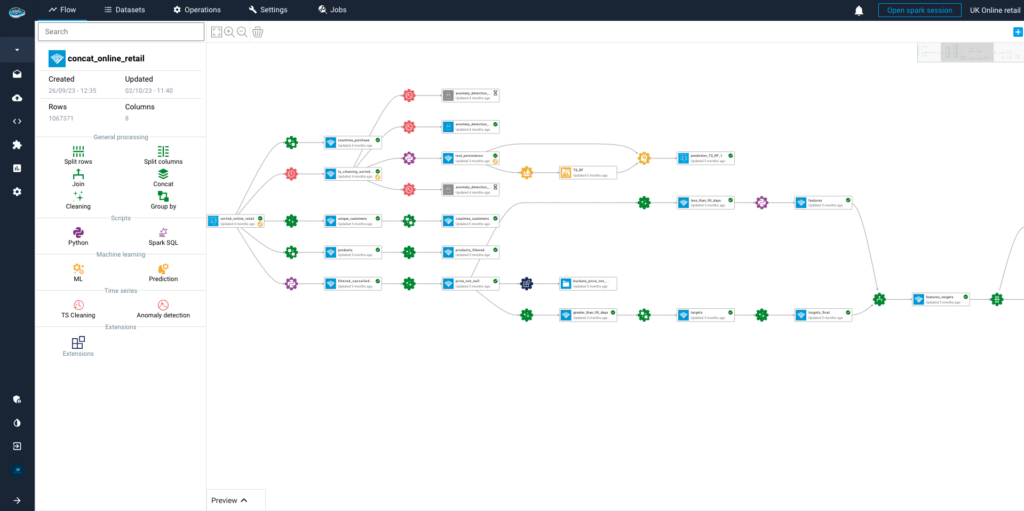
Strong Tools for Data Management
papAI is a service that provides organizations with strong data management solutions to effectively store, handle, and analyze large volumes of data. Its ability to comprehend natural language allows data scientists to interpret unstructured data, including text, pictures, and videos. This is one of its primary characteristics.
In addition to measuring action performance, papAI shows real-time execution times for queries, scripts, machine-learning models, and forecasts. The tool offers the ability to stop or force the processing chain’s further stages in response to abnormalities or circumstances.
Additionally, it enables users to evaluate changes without impacting production, mutualize a sub-chain of treatments to many processing chains, and utilize machine learning to recommend or automate operations to expedite data preparation.
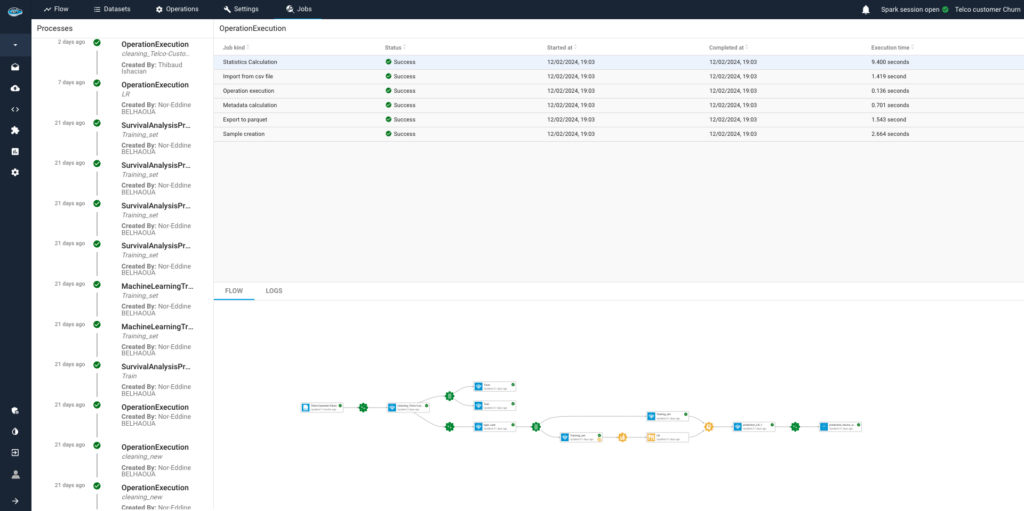
Enhance the performance of MLops
MLops is transformed by the papAI solution since it offers a full-service solution. We manage all aspect of MLops, including automatic re-training, performance monitoring, and model deployment. Ensuring that models consistently generate trustworthy projections is our goal.
Our distinctive quality is our proactive performance monitoring. In the event that the model performs below a certain threshold, we promptly notify the user. But we don’t stop there.
The capabilities and usefulness of the solution may be increased by users by adding new services to the papAI cluster with only one click. The solution’s dynamic scalability allows it to grow to accommodate the user’s requests.
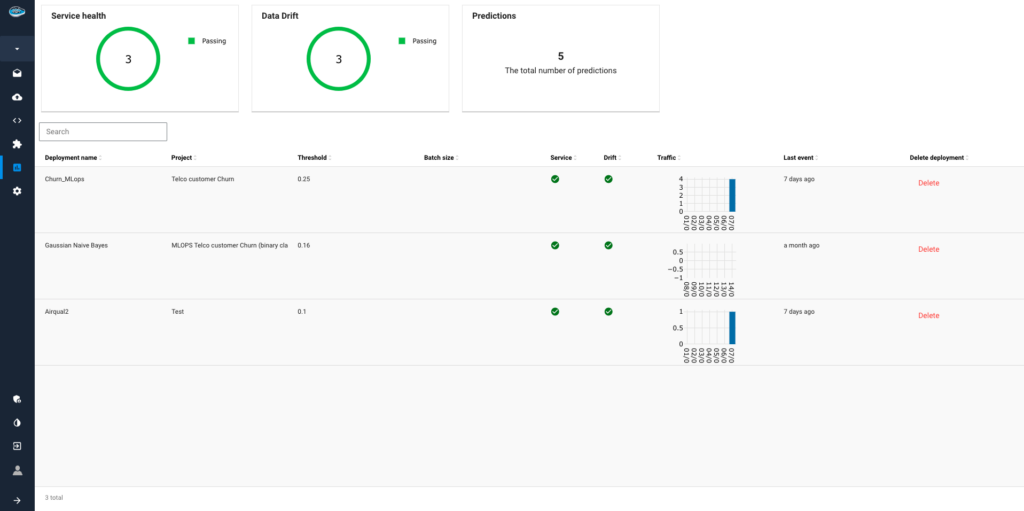
Explainability & Interpretability
Programmes utilising AI and machine learning must have explainability, particularly in industries where the decisions made by these systems might have a significant influence, such as healthcare and finance. papAI is aware of this and offers a variety of explainability features to assist teams in comprehending the inner workings of their models and decision-making processes.
The Explainability One such tool that provides an easy-to-understand summary of the main factors impacting a model’s decisions is the dashboard. Because of the dashboard’s comprehensive explanations of how each element impacts a projection, teams are able to understand the rationale behind the model’s decision-making process.
By making any biases or weaknesses in the model visible, this may help teams enhance both the model’s performance and their technique. Moreover, teams may determine the key aspects influencing a model’s decisions by utilising the integrated feature significance analysis tools provided by papAI Solution. By using this data, the model’s accuracy may be improved overall and superfluous features can be eliminated.
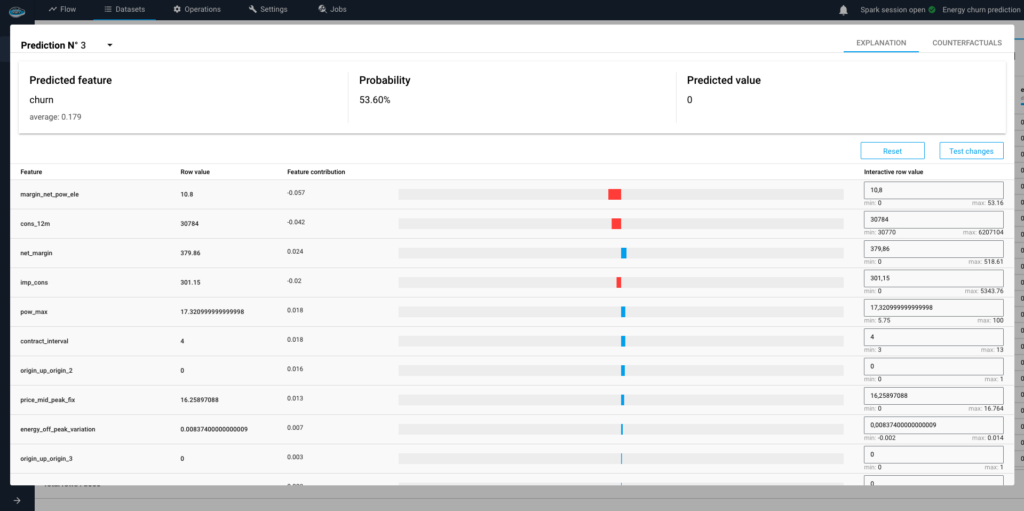
Interested in discovering papAI?
Our AI expert team is at your disposal for any questions
“DATATEGY EARLY CAREERS PROGRAM” With Samar CHERNI
“DATATEGY EARLY CAREERS PROGRAM” With Samar CHERNI Hello, my name...
Read MoreAI Origins: Yann LeCun
AI Origins: Yann LeCun Welcome to ”AI Origins “ series....
Read MoreThe Rise of Humanoid Robots: Progress and Challenges
The Rise of Humanoid Robots: Progress and Challenges Some humanoid...
Read More


